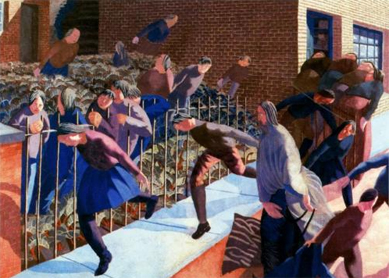Is the New Testament a violent book? Is the God of the New Testament less violent than the God of the Old Testament?
When people imagine an angry male God, dishing out punishments and inflicting suffering, they might identify Him as the God of the Old Testament. When asked to consider stories about inflicting harm, even death, upon others in God’s name, again, they might think they are in Old Testament territory. But the New Testament has its own share of violence committed by both people and God. Christians have sometimes assumed that the ministry of Jesus reflected a radical shift in the nature of God towards peace and love, and away from anger and wrath. Yet, depending on context and point of view, New Testament texts might depict God, and God’s people, as peaceful, or violent, or both.
Name-calling is a common type of violence in the New Testament. In response to the fact that many Jews did not believe that Jesus was the messiah, gospel authors told stories of Jesus attacking them in his teaching. In
New Testament texts often reflect, rather than challenge, the violent household and political structures of the ancient world. Jesus tells parables in which beatings, and even killings, of household slaves are affirmed as disciplinary measures (for example,
The final judgement is imagined in particularly violent terms in the New Testament, with the book of Revelation serving as Exhibit A. Revelation’s pages burst with gruesome scenes of cosmic battles, plagues, and bloodshed. Consider, for instance, the birds who gorge on human flesh at God’s banquet (
Bibliography
- Kalmanofsky, Amy, ed. Sexual Violence and Sacred Texts. Cambridge, MA: FSRBooks, 2017.
- Matthews, Shelly, and E. Leigh Gibson, eds. Violence in the New Testament. New York: T&T Clark 2005.
- Smith. Shanell T. The Woman Babylon and the Marks of Empire: Reading Revelation with a Postcolonial Womanist Hermeneutics of Ambiveilence. Minneapolis: Fortress, 2014.





